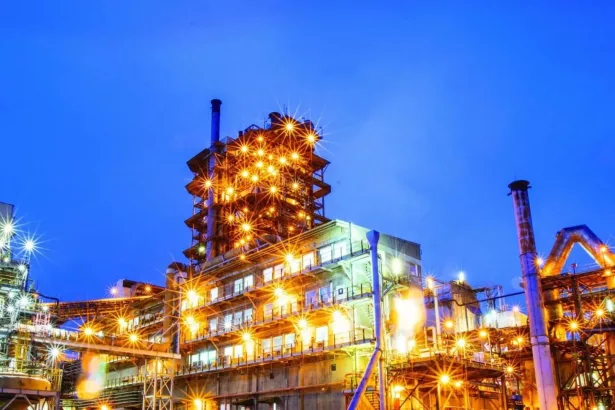KANSANSHI MINING ARE LEADING THE WAY
Today, Kansanshi operates in Zambia as Africa’s largest copper provider in the region’s mining industry. It is the company’s forward-thinking and people-centric mentality that stands it apart from others in the sector, leading through a mixture of expertise and perseverance.
“Kansanshi’s differentiation is a result of First Quantum’s ethos evident in the company’s history over the last 25 years,” Mukutuma says. “First Quantum’s people are well-known for a ‘can do’ attitude and specialist technical, engineering, construction and operational skills, which allow us to develop and successfully run complex mines and minerals processing plants.
“As a company and as individuals, we strive to go beyond the goals set by other companies. After 25 years of operations, we are now one of the world’s top 10 copper producers, operating in multiple countries. We are focused on providing a tangible benefit from everything we do for investors, employees and the many communities that host our operations.”

ZAMBIAN MINING
The mining industry itself is vast in Zambia. The country has access to a multitude of rich metals and minerals that are key to the production of modern necessities and core to the continued growth of infrastructure all across the world.
“The mining industry in Zambia and the wider African continent has supported economies and wrought development, and continues to do so to this day,” Mukutuma elaborates. “However, the industry also continues to largely divide opinion – in my view – due to the huge expectations that large scale investments inherent in mining come with.
“For example, the expectations of localised host communities when it comes to job provision and business opportunities tends to be huge. Given this setting, mining operations have to engage a diverse and dynamic stakeholder base and find win-win situations in order to be successful and sustainable.
“This combination of geology, the many disciplines of engineering, finance and a diverse and dynamic stakeholder base makes for an exciting space indeed – challenging for sure, but very exciting!”
However, the last two years have had their impact on the Zambian mining industry and Kansanshi itself.
“The COVID-19 pandemic has impacted life around the world, with a number of lives lost, and people’s livelihoods altered in profound ways, with many people losing their source of income or having their earnings reduced drastically as a result of the pandemic,” Mukutuma informs us. “I always state that the most significant impact has been on children’ education. Growing up in locked-down communities for the children of this generation will inevitably have long-term impacts.
“As a business, we were determined to keep operating through the pandemic. We achieved this by instigating protocols in the workplace to mitigate COVID-19 transmission (using the five golden rules) and investing in state-of-the-art COVID-19 testing, contact tracing and medical facilities, and working with the Zambian Ministry of Health to make vaccines available to the workforce and their families.”
Kansanshi continued operating throughout the pandemic and is currently taking the lead in driving vaccination campaigns at the mine site and within the local community.
INNATE INTEREST
For Mukutuma, this dedication towards employees and the community at large is an invaluable part of Kansanshi as a business.
The COVID-19 period has pushed forward the necessity of digital communication and connection on top of other aspects of life, and also represents the ever-changing nature of the mining industry that Mukutuma has been intrigued with since his youth.
“I grew up in Kabwe (Zambia), a major mining town at the time. I was intrigued by how the miners got dirt out of the ground and processed it into valuable products such as zinc and lead, in the case of Kabwe Mine, or copper and cobalt for the mines on the Copperbelt,” he says. “I liked the physical side of mining. After all, underground mining to a child sounds like an adventure, and I was engaged by the science and the business side of things too.
“Even as a 10-year-old child, it was clear that mining as a business was the anchor of the economy of Kabwe and I was keen to be part of this important industry. I wanted to get into an industry that was considered key to the country.”
This led Mukutuma to study the sciences in secondary and high school, and thereafter leading to studying Chemical Engineering with Minerals Engineering at the University of Birmingham (UK).
“This launched my career in mining – first with the Zambia Consolidated Copper Mines Limited on a number of operations, Konkola Copper Mines Plc, Anglo American Corporation and then First Quantum Minerals at their Bwana Mkubwa Operations in Ndola,” he adds. “With First Quantum, I have taken on a number of roles in Zambia, Mauritania, Finland and Australia, and now I’m back in Zambia again, here at Kansanshi – full circle.”
INVESTMENTS AND AUTOMATION
Mukutuma has had the privilege of watching Kansanshi grow and develop its operations both internally and externally.
Over the course of his tenure, Kansanshi has undergone multiple investments – additional capacity, new product initiative, quality improvement and/or cost reduction/efficiency improvements.
“Kansanshi is currently mining from the Main and Nortwest Pits, and will develop the Southeast Dome Pit next,” Mukutuma says. “One investment of note in the recent past is the Kansanshi Copper Smelter, commissioning for which commenced in the third quarter of 2014.
“The smelter ramped up quickly, achieving commercial production in 2015, and it has a nominal capacity of 1.2 million tonnes per annum of concentrate to produce over 300,000 tonnes of copper metal annually and more than one million tonnes per annum (Mtpa) of sulphuric acid as a by-product. The main processing steps are smelting, converting, fire refining and casting. We are looking to expand the smelter to 1.6 Mtpa and take the high-pressure Leach Plant’s treatment rate up by 40 to 60 percent. This will ensure that Kansanshi has capacity to treat additional concentrate arising from the planned concentrator expansion.”
Kansanshi is also looking into increasing its fleet of electric vehicles (EVs) – in this case electric mining haul trucks that will operate in and around the pits – as well as investing in renewable energy in the form of solar and wind power.
Among these core investments is that of automation, a key part of Kansanshi’s business plan moving forwards.
“The level of automation in our operation in mining and the process plants (concentrators, hydrometallurgical plants and the smelter) is significant,” Mukutuma explains. “From the use of high precision mining in mining operations to expert control system in process unit operations, the use of automation, artificial intelligence (AI) and machine learning (ML) is pervasive throughout the business.
“It is of critical importance that we keep abreast with developments in technology and continue to be innovative to streamline and better our operations for our shareholders, customers, employees and the environment.”
The automation of Kansanshi’s operations has resulted in reduced environmental footprint. The use of energy efficient in-pit trolley-assist technology has resulted in 100,000 tonnes of CO2e saved annually, and approximately one-million tonnes of CO2e is saved annually through the operation of the Kansanshi smelter.
VIEW THE KANSANSHI MINING BROCHURE
































